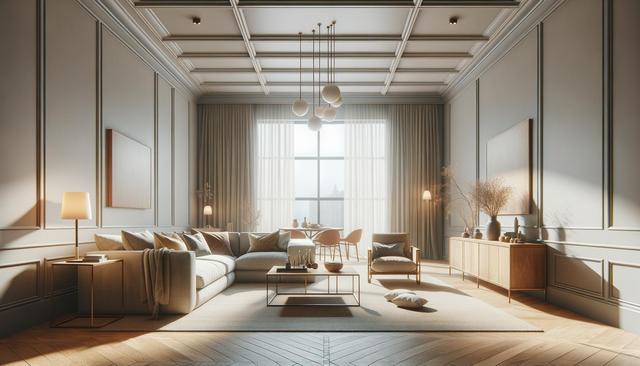Assessing Your Current Space
Before diving into any living room transformation, it’s essential to evaluate what currently works and what doesn’t. Start by observing how the room is used on a daily basis. Consider the natural lighting that enters the space and how furniture placement might be influencing movement patterns or conversations. Take note of areas that feel cramped or underutilized. A good method is to take photos of the room from different angles—this can help you see the space more objectively. Ask yourself questions like: Is there enough seating? Is the room conducive to both relaxation and entertaining? These initial observations will guide your next steps.
Other factors to consider include:
- Whether the current layout supports your lifestyle
- If furniture sizes are appropriate for the room’s dimensions
- The presence of any visual clutter or underwhelming décor elements
By understanding your starting point, you can make more informed decisions as you begin to plan your living room’s transformation.
Choosing a Functional Layout
The layout of your living room has a significant impact on its functionality and flow. A well-thought-out arrangement can make even a small room feel spacious and welcoming. Begin by identifying the focal point of the room—it could be a fireplace, a large window, or a piece of artwork. Arrange your seating around this focal area to create a sense of cohesion. For larger rooms, consider creating multiple zones, such as a conversation area and a reading nook.
Here are some layout strategies to improve functionality:
- Float furniture away from walls to create better flow
- Use area rugs to define specific zones
- Ensure there’s enough space between pieces for easy movement
Don’t be afraid to experiment with moving things around. Sometimes even a small change in the angle of a sofa or the position of a coffee table can make a big difference in how the room feels and functions.
Furniture and Storage Solutions
Furniture plays a dual role in any living room—it contributes to both the aesthetics and the usability of the space. When selecting furniture, opt for pieces that offer versatility. For instance, an ottoman that doubles as storage or a coffee table with built-in drawers can help reduce clutter. Modular sofas or sectional seating can also adapt to various layouts and accommodate more guests when needed.
Consider the following when choosing furniture and storage:
- Scale and proportion relative to room size
- Materials and finishes that match your style
- Multifunctional pieces that serve more than one purpose
Adding open shelving or wall-mounted units can also help you maximize vertical space without encroaching on the floor area. This is particularly useful in smaller living rooms where every inch counts. Thoughtful storage solutions allow you to maintain a clean, organized environment while keeping essentials within reach.
Incorporating Lighting and Color
Lighting and color are two of the most transformative elements in any interior design project. Start by evaluating your current lighting setup. A combination of ambient, task, and accent lighting usually works well to create a balanced atmosphere. Floor lamps, table lamps, and wall sconces can all contribute to layered lighting that adjusts to different moods and activities.
Color choices should reflect both your personal taste and the mood you want to create. Light, neutral tones can make a small room feel larger, while darker hues add warmth and depth. Don’t be afraid to introduce pops of color through accessories like cushions, rugs, or artwork.
Effective ways to use lighting and color include:
- Installing dimmer switches to control brightness levels
- Using light-colored curtains to maximize natural light
- Choosing a cohesive color palette for walls, textiles, and décor
These elements not only enhance the visual appeal of your living room but also contribute to a more comfortable and welcoming environment.
Adding Personal Touches
Finally, infuse your living room with elements that reflect your personality and lifestyle. Personal touches make a space feel lived-in and meaningful. Display family photos, travel souvenirs, or artwork that resonates with you. Plants are another excellent way to bring life into the room—they add color, texture, and even improve air quality.
Other personal elements might include:
- A curated bookshelf with your favorite reads
- Handmade items or gifts from loved ones
- Decorative objects that tell a story or evoke memories
Even the arrangement of these items can make a difference. Group objects in odd numbers, vary heights, and mix materials for visual interest. The goal is to create a space that feels uniquely yours while still being functional and aesthetically pleasing for everyday living.
Conclusion: Tailoring Your Living Room to Fit Your Needs
Transforming your living room doesn’t require a complete overhaul or major investment. By taking the time to assess your current setup, refine the layout, choose functional furniture, adjust lighting and color, and add personal touches, you can significantly enhance the comfort and appeal of your space. Whether you’re aiming for a cozier atmosphere or a more modern feel, thoughtful design decisions tailored to your needs and preferences can make all the difference. Remember, the goal is to create a room that works for your lifestyle and brings you joy every time you step in.


